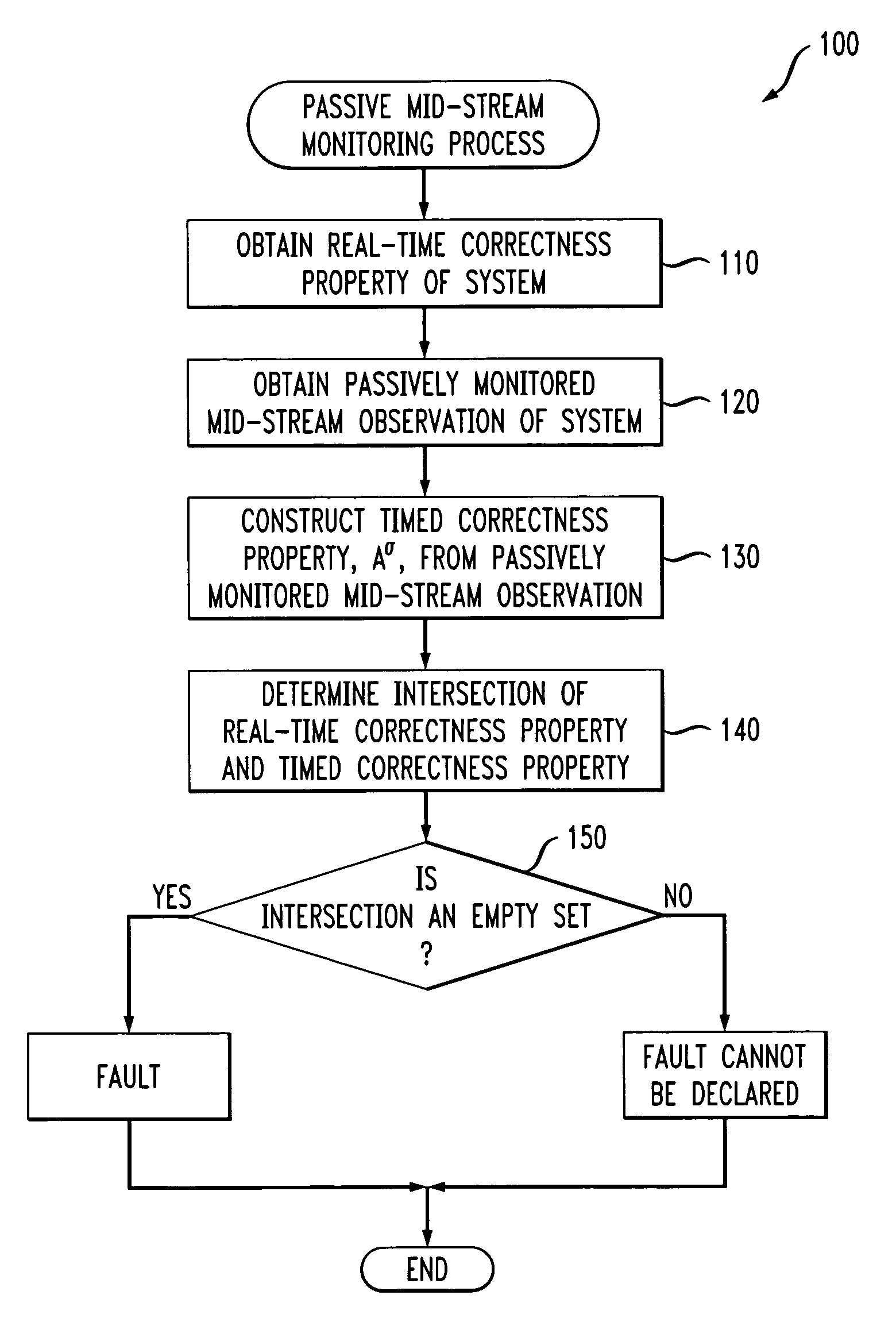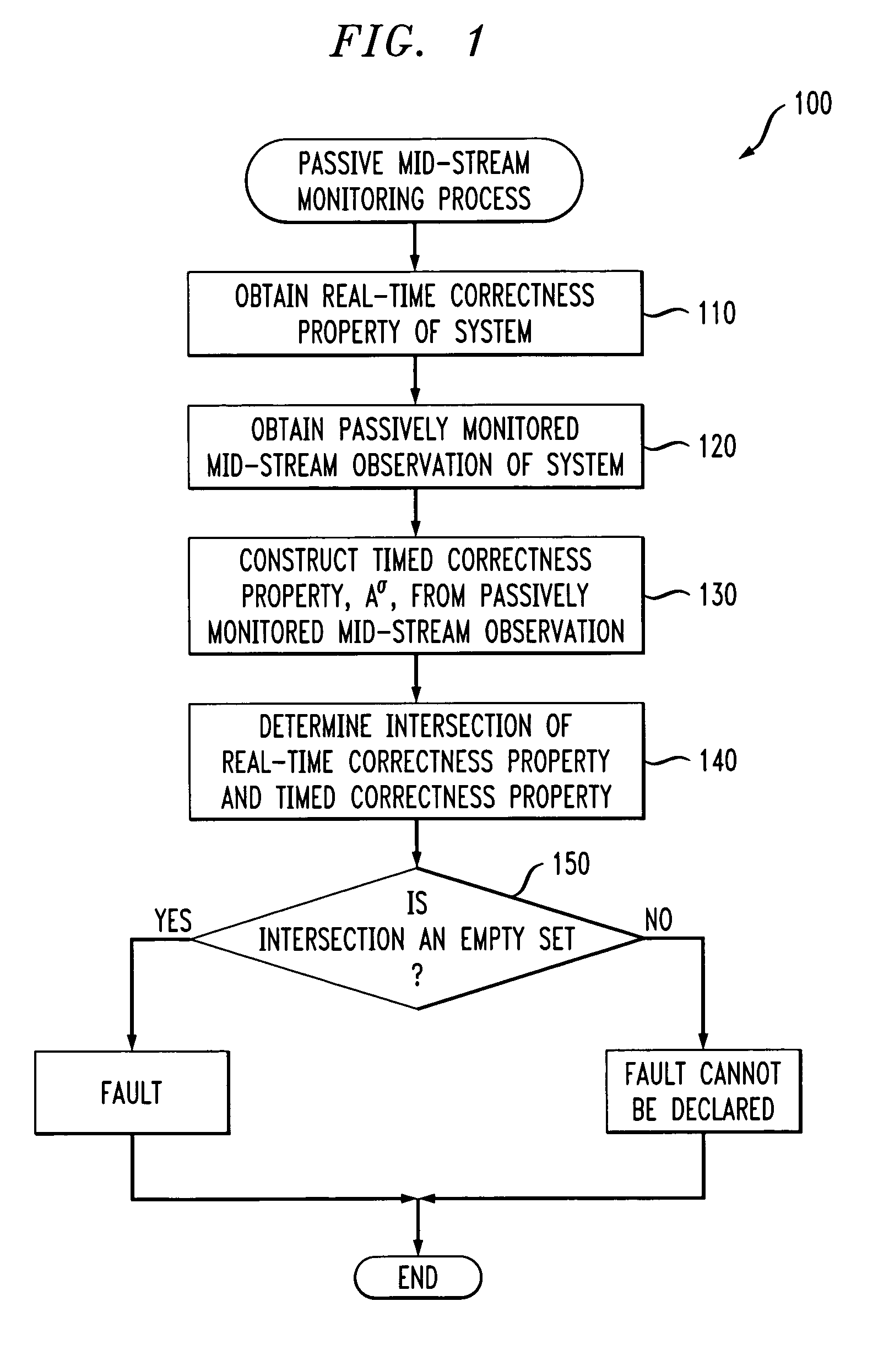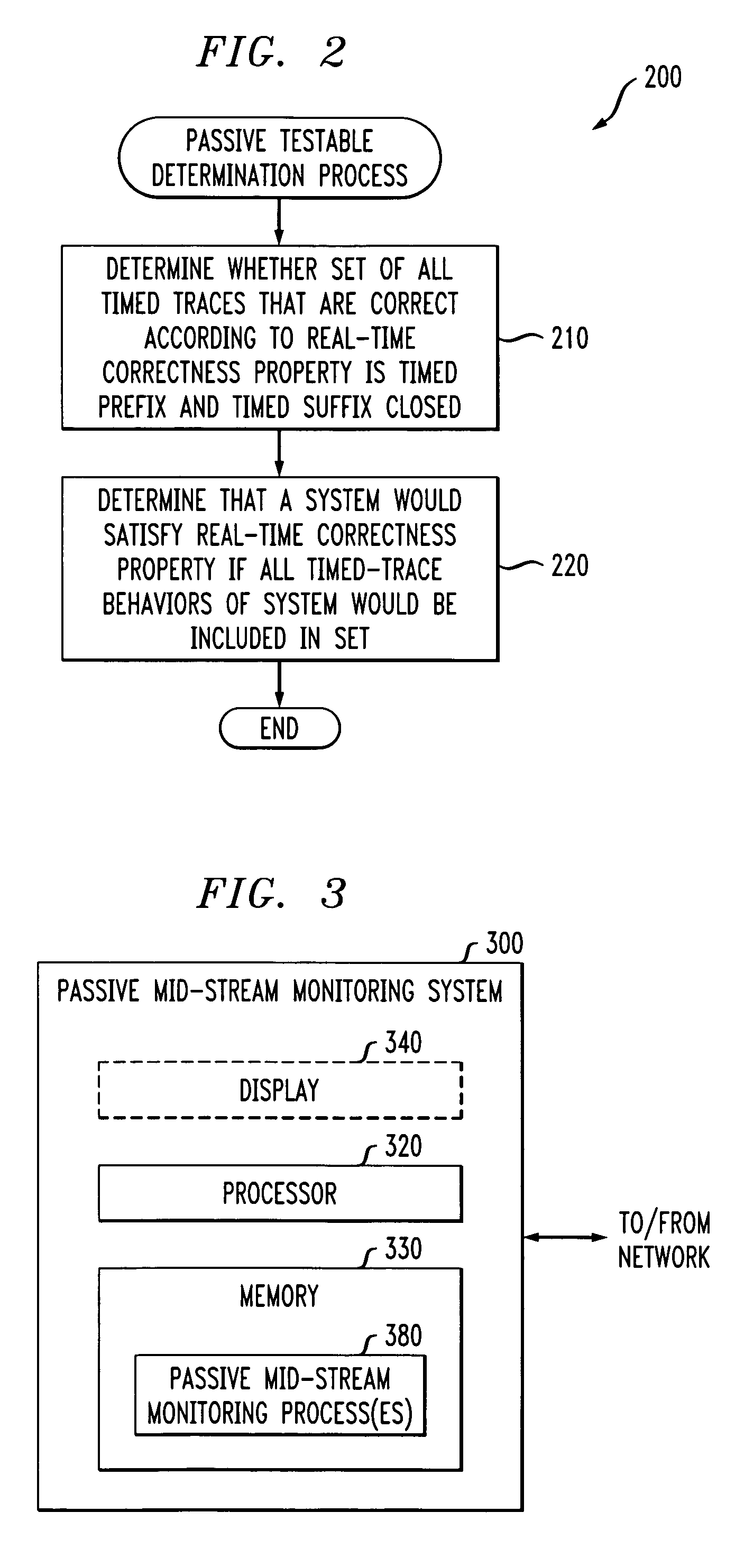Methods and apparatus for passive mid-stream monitoring of real-time properties
a technology of real-time properties and monitoring methods, applied in the field of communication network monitoring techniques, can solve the problems of not scaling to large-scale systems, inability to exhaustively test all possible behavior of the network, and increasing the complexity of analysis of real-time behavior
- Summary
- Abstract
- Description
- Claims
- Application Information
AI Technical Summary
Problems solved by technology
Method used
Image
Examples
Embodiment Construction
[0015] The present invention provides an approach for passive monitoring of real-time properties, by observing the mid-stream behavior of systems during their execution in arbitrary environments. In particular, the present invention identifies a class of system models, referred to as expressively sufficient, with the implementation being tested assumed to be some instance of an expressively sufficient model. The conditions required of an expressively sufficient model are fairly simple and non-restrictive. Popular formalisms, such as timed automata and timed transition systems are expressively sufficient. For any correctness property P of an expressively sufficient model, a language (set) PT(P) is defined that consists of traces (including timing information) that can be exhibited by a correct implementation from some point mid-stream in its execution. Passively testing for a property P can then be formulated as the problem of determining membership of the mid-stream observation in t...
PUM
 Login to View More
Login to View More Abstract
Description
Claims
Application Information
 Login to View More
Login to View More - R&D
- Intellectual Property
- Life Sciences
- Materials
- Tech Scout
- Unparalleled Data Quality
- Higher Quality Content
- 60% Fewer Hallucinations
Browse by: Latest US Patents, China's latest patents, Technical Efficacy Thesaurus, Application Domain, Technology Topic, Popular Technical Reports.
© 2025 PatSnap. All rights reserved.Legal|Privacy policy|Modern Slavery Act Transparency Statement|Sitemap|About US| Contact US: help@patsnap.com



